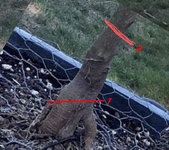SandSquid
Yamadori
Looking for a bit of help and guidance. Suggestions. Good-to-knows. Anything that’ll help. I’m fairly new to bonsai, and I’ve had this guy for a little bit, a trident maple. The trunk is about 2” wide at the base before it tapers ever so slightly up. This trunk is very straight and forks into three, two of which pretty much parallel one another. I gave it a good trim a couple days ago to somewhat conical shape, and I’ve been staring at it since then trying to figure out what to do. I’ve watched videos and read blogs and forums, but I’m getting nothing. So, figured I’d open a discussion about it with you fine folks and see what you think. For reference the tree stands 24” tall with a 16” spread. See pics….. I welcome any and all suggestions. Seriously, bring it on. 








